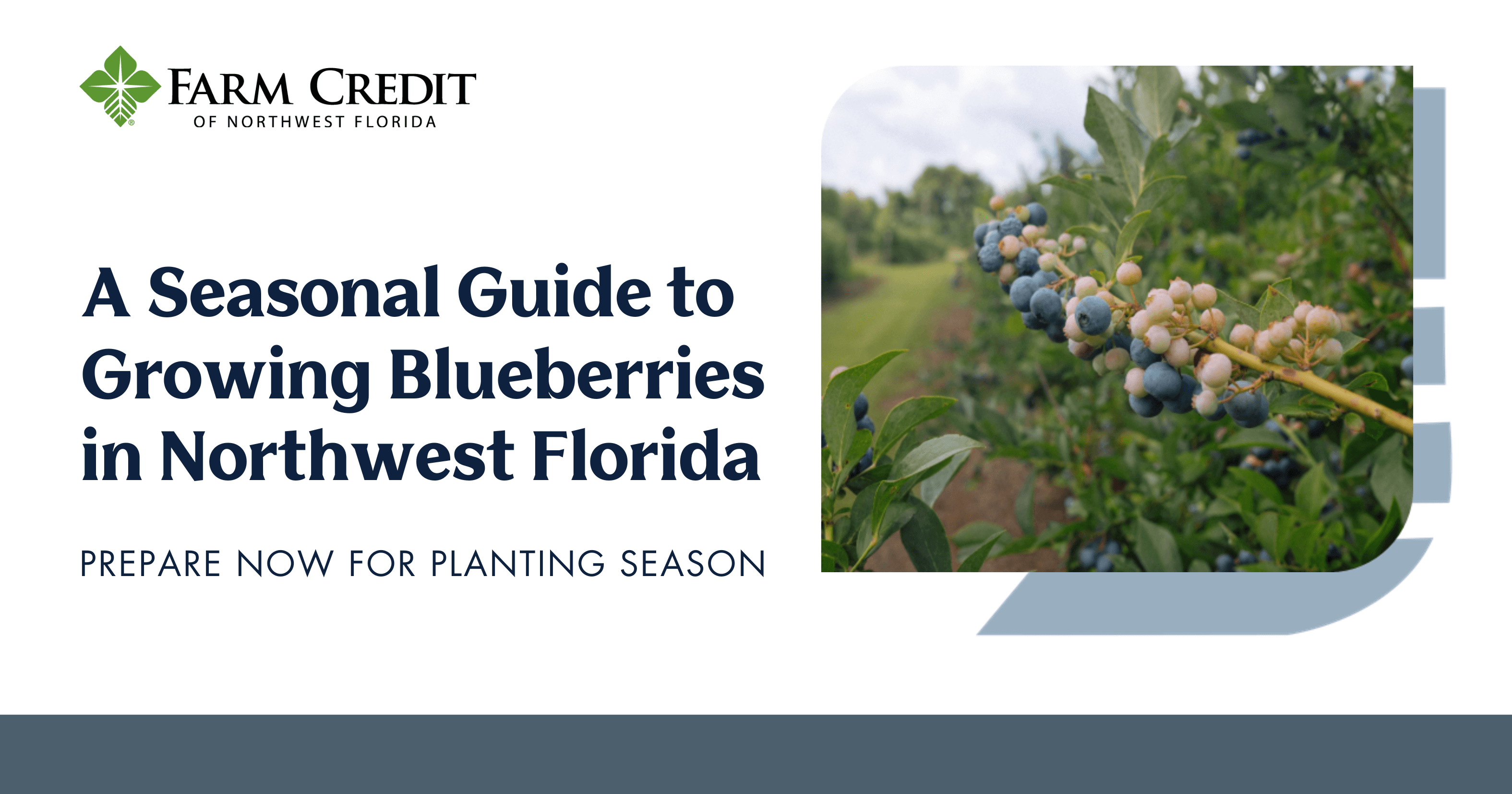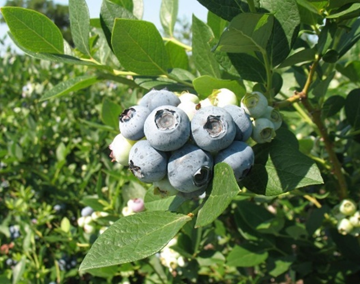A Seasonal Guide to Growing Blueberries in Northwest Florida - Fall

Blueberries are a rewarding crop for Northwest Florida home gardeners and small-scale farmers. They offer delicious fruit and vibrant foliage. Blueberries can thrive in the region's mild winters and sandy soils with the right cultivars and care. Based on expert insights from UF/IFAS Extension, this guide focuses on preparing your site and planning for winter planting, ensuring your blueberry bushes get the best possible start.
Fall Prep: Set Yourself Up for Success
As the weather begins to cool in Northwest Florida, fall is the ideal time to prepare your garden to plant blueberries. By taking a few key steps now, you’ll ensure your land is ready for when the prime planting window opens between December – February.
“You want to use that fall energy to prepare. Take a soil test, determine where you want to plant, and prepare your site. If you do the prep now, you’ll have a much better time planting in winter,” said Lauren Goldsby, UF/IFAS Extension Agent.
Preparing to Plant: What to Do This Fall
Start by getting your soil tested at your local extension office. Most blueberry varieties grown in Northwest Florida thrive in acidic conditions, with a pH between 4.5 and 5.5. However, blueberries struggle to grow and produce fruit if the pH is too high, even if the soil is otherwise fertile.
Goldsby explains:
“We’ve seen plants grown in pH 6.0 soils that are a fraction of the size of those grown in 4.5.”
Soil testing sets the foundation for healthy, productive plants.
Choosing the Right Variety
Most growers in Northwest Florida have two main options when it comes to blueberry varieties, each with its own strengths and considerations:
Rabbiteye blueberries are a favorite among Panhandle growers for good reason. They’re drought-tolerant, adaptable to poor soils, and generally more forgiving for beginners.

Bonus: Rabbiteye varieties bloom later in the season, reducing the risk of fruit loss due to the late spring freezes, a common concern in Northwest Florida.
Southern highbush cultivars require more careful soil management, consistent watering, and proactive disease control, making them better suited for growers who are ready to invest a little more attention.

Bonus: Southern highbush varieties tend to ripen earlier, which means you can enjoy fresh blueberries sooner in the season and potentially beat the peak of pest pressure that often comes later in the summer.
Goldsby offers this advice for new growers:
“Rabbit eyes are easier to grow in the Panhandle. They’re more tolerant of different soil conditions and less susceptible to pests and diseases. I always encourage people to look at what’s available locally and choose healthy plants. Don’t get stuck on one specific variety—focus on what grows well in your area and what fits your needs.”
Encouragement for New Growers
Blueberries may seem daunting to new growers, but Goldsby reminds us, “Blueberries operate differently than traditional crops, and it can be easy to feel discouraged, but there are simple management strategies you can follow to set yourself up for success.”
The good news? With proper planning and seasonal care, blueberries can be a fruitful and long-lasting addition to any garden in Northwest Florida. Whether you’re planting in containers or preparing a backyard bed, the key is understanding your soil, choosing the right cultivars, and following a seasonal maintenance schedule.
Download this UF/IFAS Blueberry Guide for a year-at-a-glance outlook on planting, pruning, fertilizing, and troubleshooting common issues.
Whether you're planting a few bushes in your backyard or expanding a small garden, Farm Credit of Northwest Florida offers financing options designed for rural landowners.
.jpg)